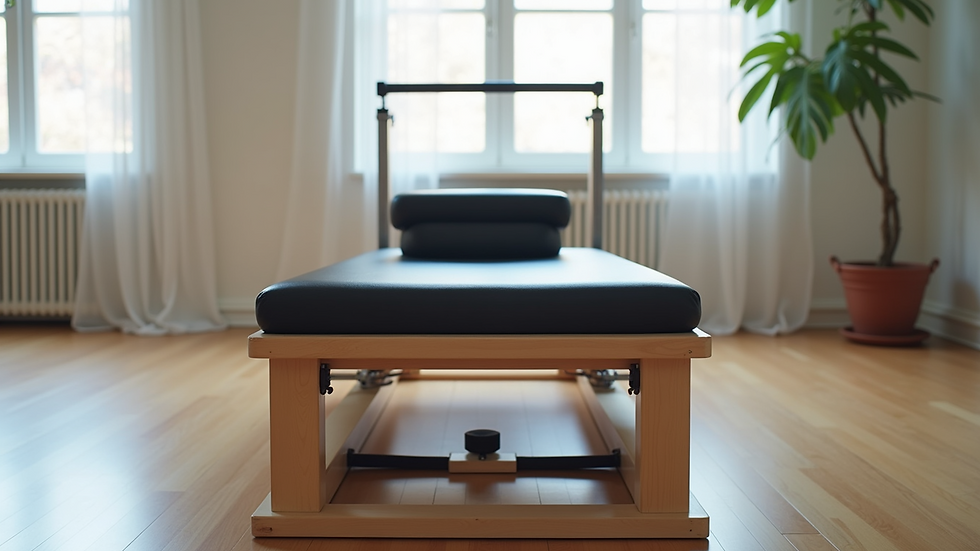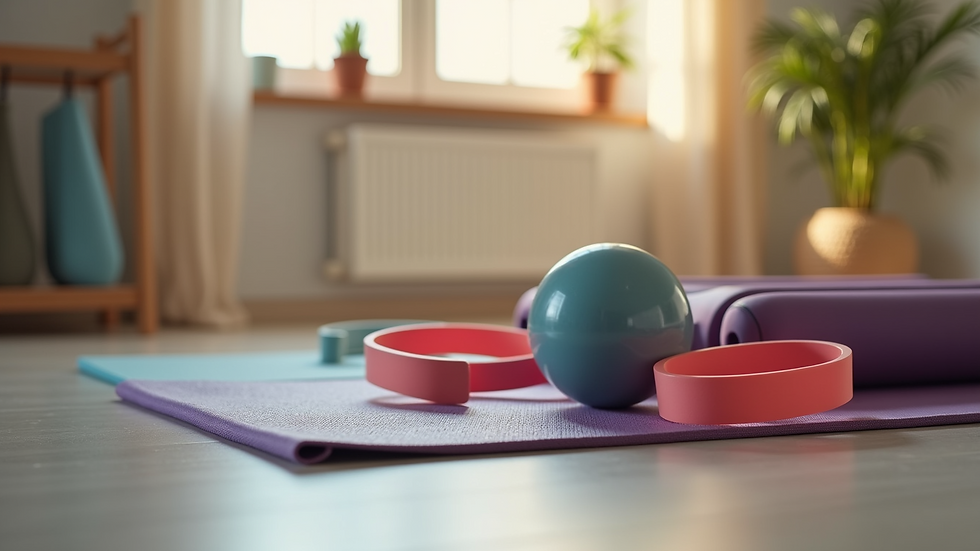Customising Your Personalised Pilates Programme
- alysoncamp8
- Aug 9
- 4 min read
When it comes to Pilates, one size definitely does not fit all. Each body is unique, especially when you’re recovering from surgery or managing orthopedic conditions. That’s why creating a customised Pilates programme is so important. It allows you to work safely, effectively, and comfortably, focusing on your specific needs and goals. I’m here to guide you through the process of tailoring your Pilates practice so it supports your recovery and enhances your well-being.
Understanding the Importance of Customised Pilates Programmes
Customised Pilates programmes are designed to fit your individual body, abilities, and health status. Unlike generic classes, these programmes take into account your medical history, current physical condition, and personal goals. This approach is especially valuable if you have orthopedic concerns or are healing after surgery.
For example, if you have a knee replacement, your Pilates routine will focus on gentle strengthening and improving joint mobility without putting undue stress on the area. If you’re dealing with back pain, your programme might prioritise core stability and posture correction.
The benefits of a tailored Pilates plan include:
Reduced risk of injury by avoiding movements that could aggravate your condition.
Faster recovery through targeted exercises that promote healing.
Improved confidence as you learn to move safely and effectively.
Greater motivation because the exercises feel relevant and achievable.
By working with a Pilates expert who understands your needs, you can enjoy a practice that feels supportive and empowering.

How to Create Your Customised Pilates Programme
Creating a personalised Pilates programme starts with a thorough assessment. This helps identify your strengths, limitations, and areas that need special attention. Here’s a step-by-step guide to help you get started:
1. Assess Your Current Physical Condition
Before you begin, take stock of your body’s current state. Consider:
Any recent surgeries or injuries.
Areas of pain or discomfort.
Your range of motion and flexibility.
Muscle strength and endurance.
Balance and coordination.
You might want to work with a Pilates instructor or physiotherapist who can perform a detailed assessment and recommend suitable exercises.
2. Define Your Goals
What do you want to achieve with Pilates? Your goals might include:
Regaining mobility after surgery.
Reducing chronic pain.
Improving posture and alignment.
Building strength in specific muscle groups.
Enhancing overall well-being and relaxation.
Clear goals will help shape your programme and keep you motivated.
3. Choose Appropriate Exercises
Based on your assessment and goals, select exercises that are safe and effective for you. For example:
If you have shoulder issues, focus on gentle arm and shoulder movements that improve stability.
For lower back pain, include core strengthening and pelvic alignment exercises.
If balance is a concern, incorporate standing Pilates moves with support.
Remember, quality matters more than quantity. It’s better to do fewer exercises well than to rush through a long routine.
4. Plan Your Schedule
Decide how often you will practice Pilates. Consistency is key, but it’s important to listen to your body. Start with 2-3 sessions per week and adjust as needed.
5. Monitor Your Progress
Keep a journal or notes about how you feel after each session. Are you noticing improvements? Any discomfort? This feedback will help you and your instructor tweak the programme over time.
By following these steps, you can build a Pilates routine that truly fits your needs.

Tips for Staying Motivated and Safe
Sticking to a customised Pilates programme can be challenging, especially when you’re managing pain or recovery. Here are some tips to help you stay on track:
Set realistic expectations. Progress may be slow but steady. Celebrate small victories.
Listen to your body. If something hurts, stop and modify the exercise.
Use props and supports. Pilates balls, resistance bands, and cushions can make exercises more comfortable.
Stay hydrated and rest well. Your body heals better when it’s well cared for.
Seek professional guidance. A qualified Pilates instructor can provide valuable feedback and adjustments.
Remember, Pilates is about mindful movement. Approach your practice with patience and kindness towards yourself.
How Personalised Pilates Programmes Can Transform Your Recovery
I’ve seen firsthand how personalised Pilates programmes can make a real difference. When tailored to your unique needs, Pilates helps you regain strength, improve flexibility, and reduce pain. It’s not just about exercise - it’s about reconnecting with your body and building confidence in your movement.
For those recovering from surgery, Pilates can:
Enhance circulation and reduce swelling.
Prevent muscle atrophy.
Improve posture and alignment disrupted by surgery.
Support mental well-being through gentle, focused movement.
If you’re managing orthopedic conditions, Pilates offers a low-impact way to strengthen muscles around affected joints, improving stability and reducing discomfort.
If you want to explore personalised Pilates programmes, I recommend checking out Aly Camp Pilates. Their expert approach is designed especially for people with orthopedic needs and post-surgery recovery.

Embracing Your Pilates Journey
Customising your Pilates programme is a wonderful step towards better health and movement. It’s a journey that requires patience, self-awareness, and support. By focusing on your individual needs, you can enjoy a practice that feels safe, effective, and rewarding.
Remember, every small step counts. Whether it’s improving your posture, easing pain, or simply feeling more comfortable in your body, Pilates can help you get there. Take your time, stay consistent, and celebrate your progress.
If you’re ready to start or refine your Pilates practice, consider reaching out to professionals who specialise in personalised Pilates programmes. Your body will thank you for the care and attention you give it.
Here’s to your health and happiness on this Pilates journey!



Comments